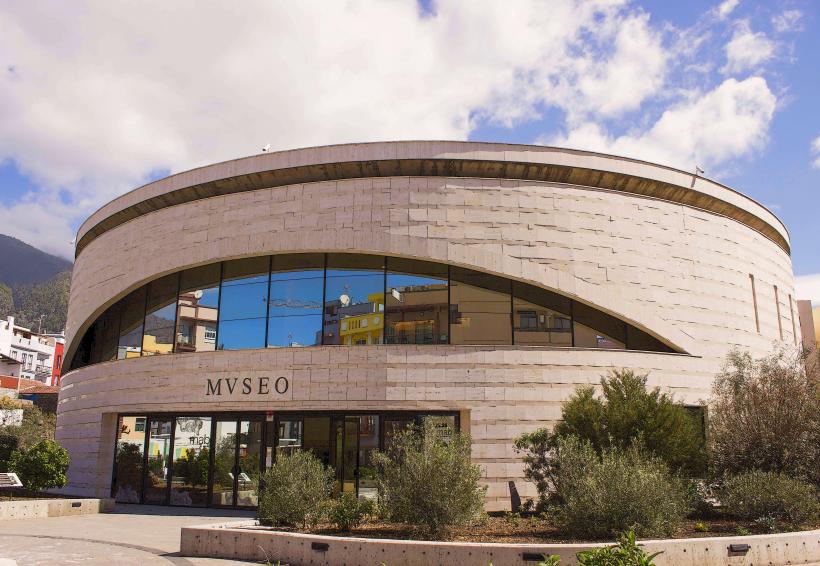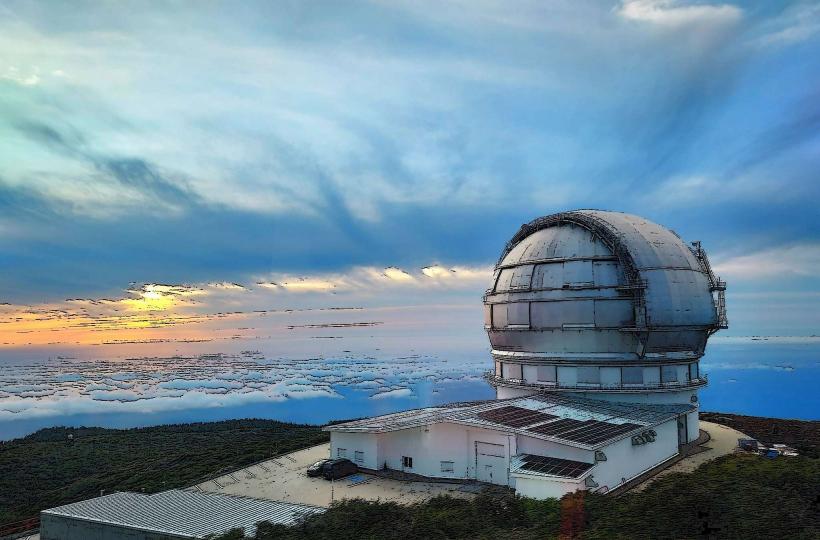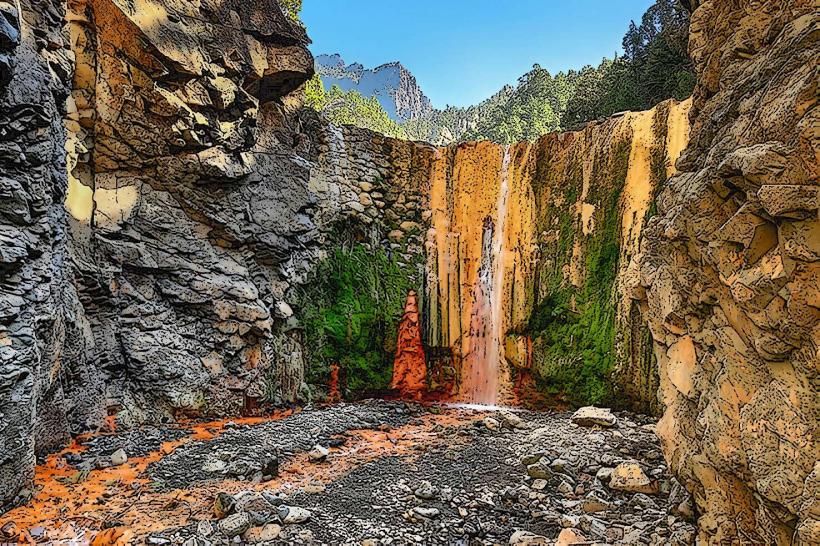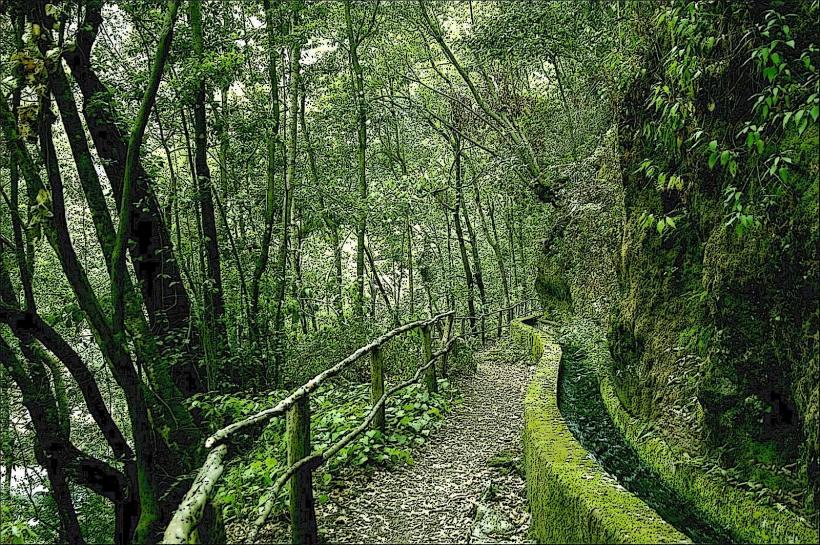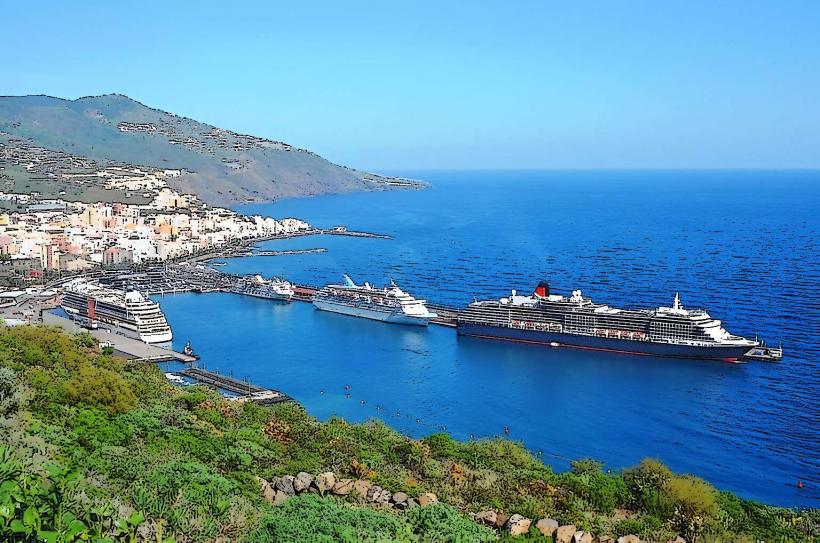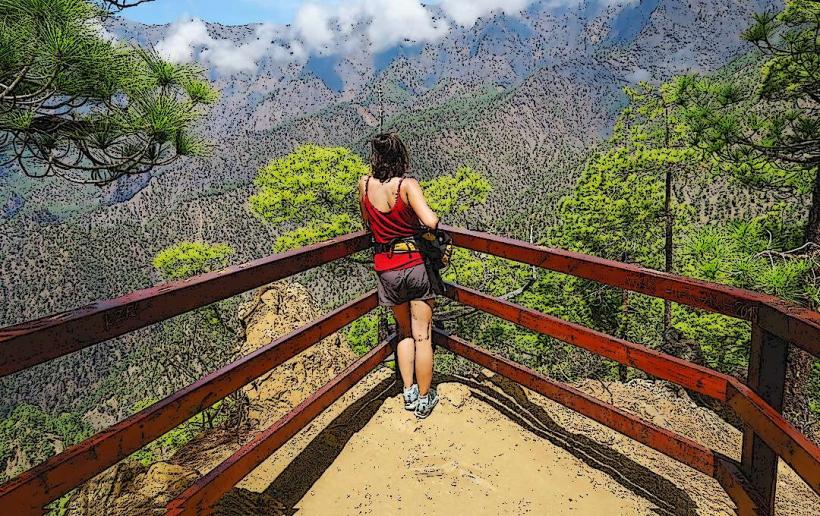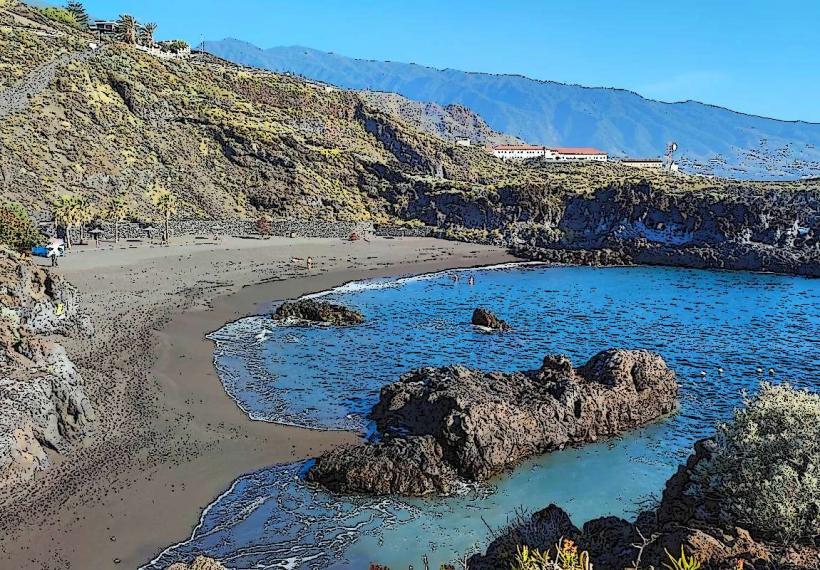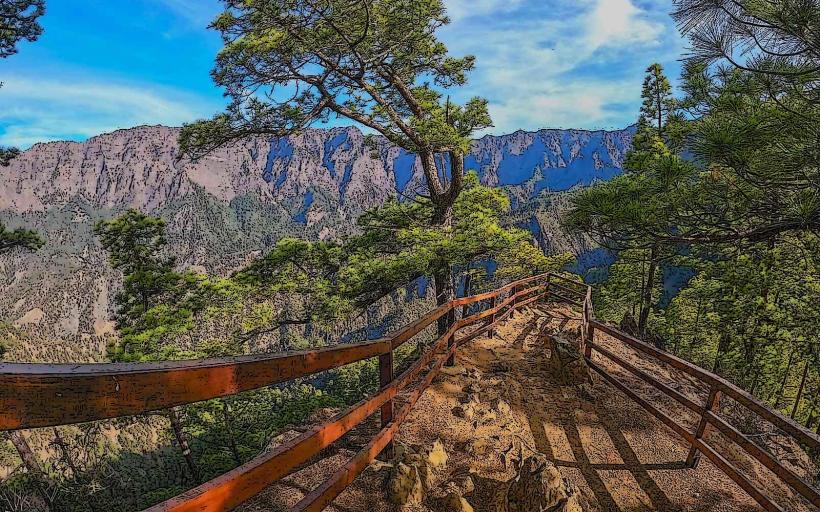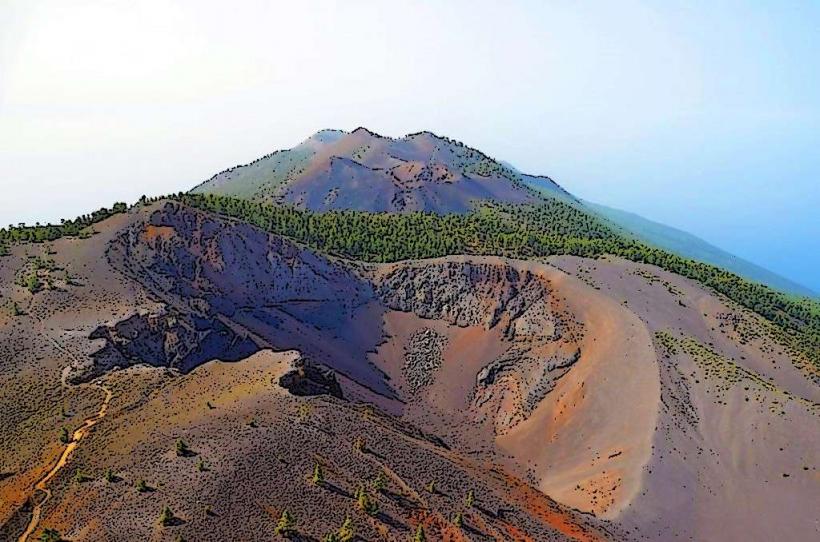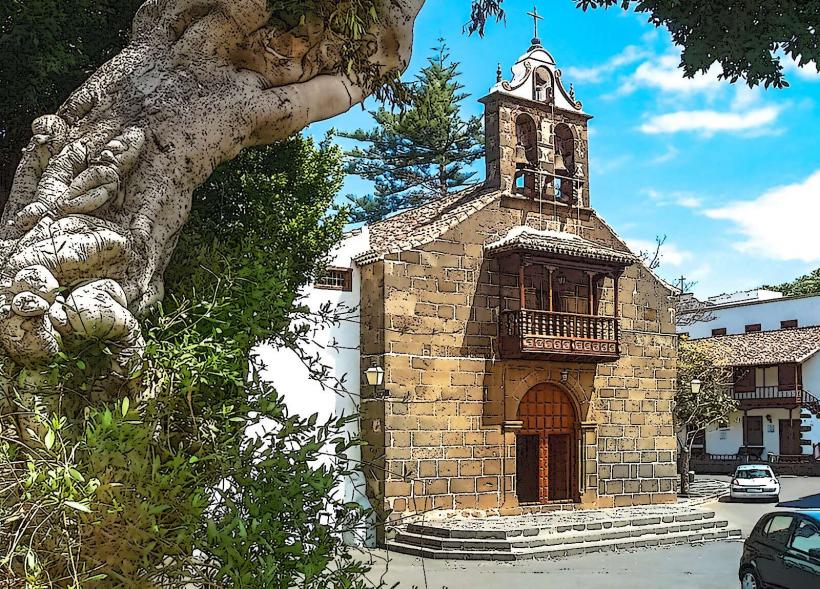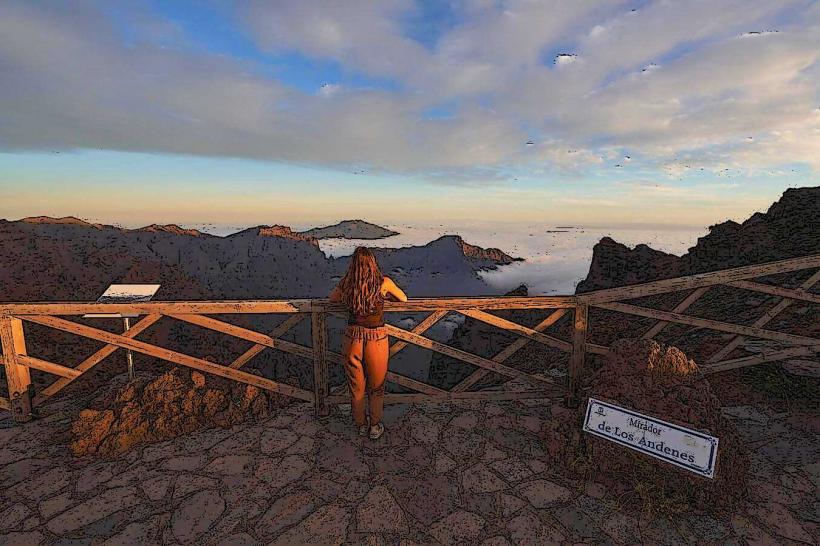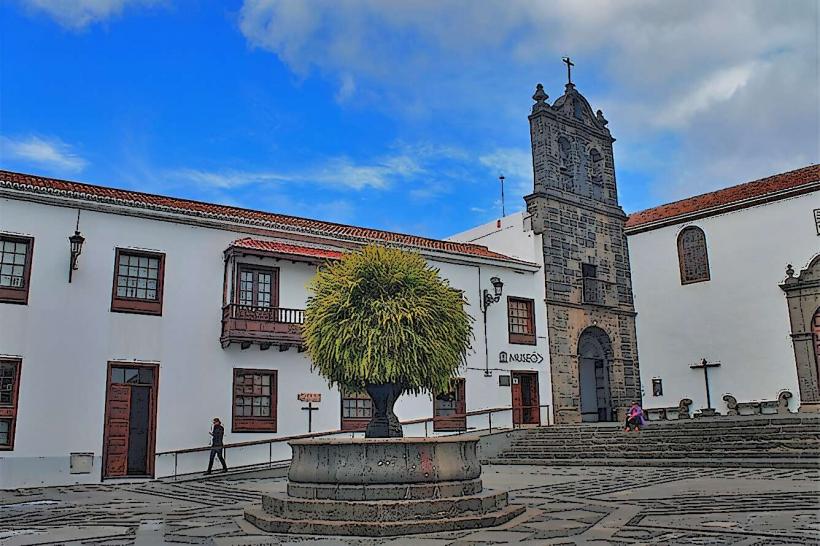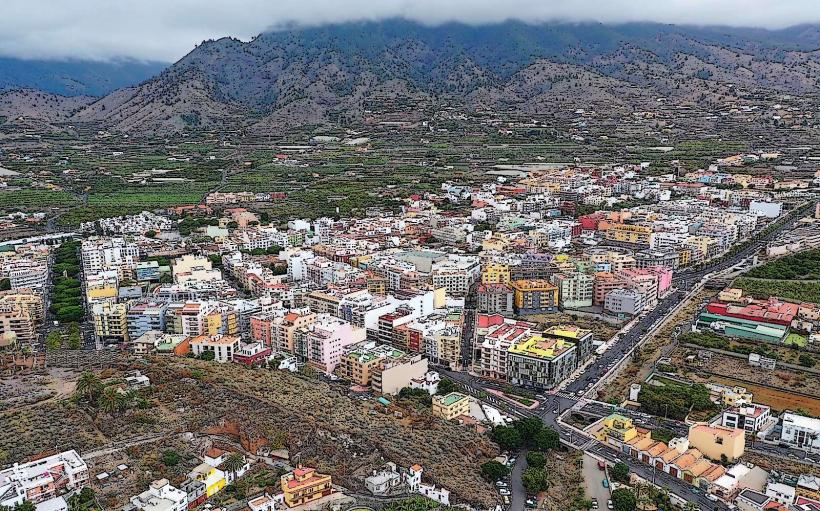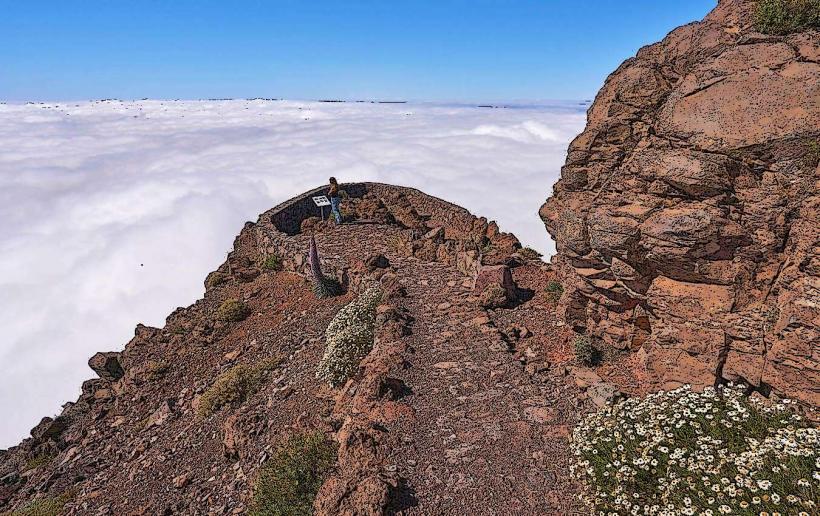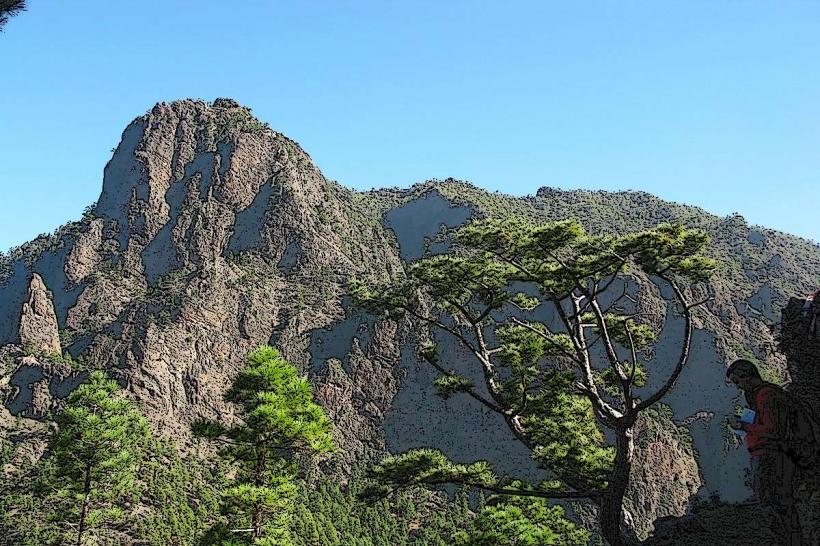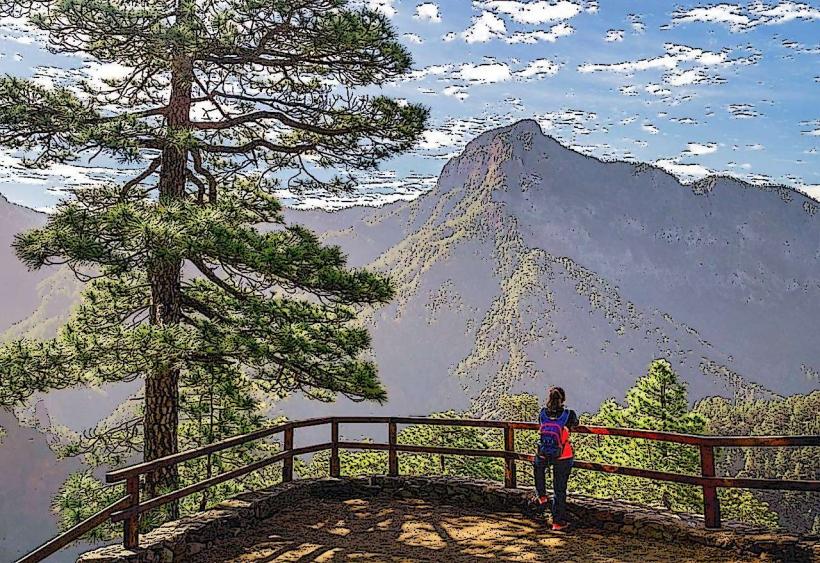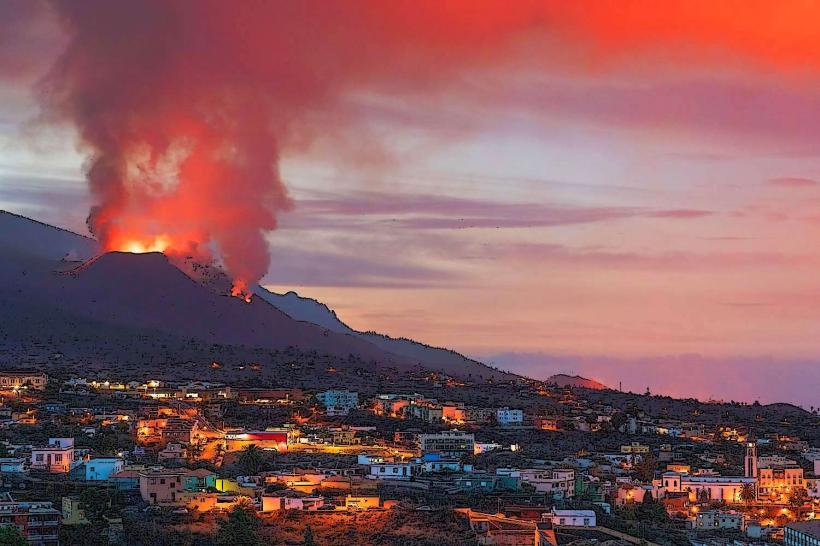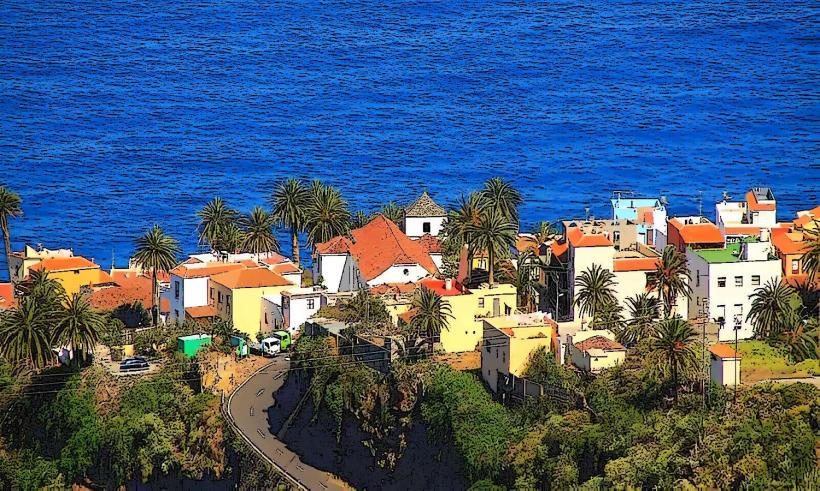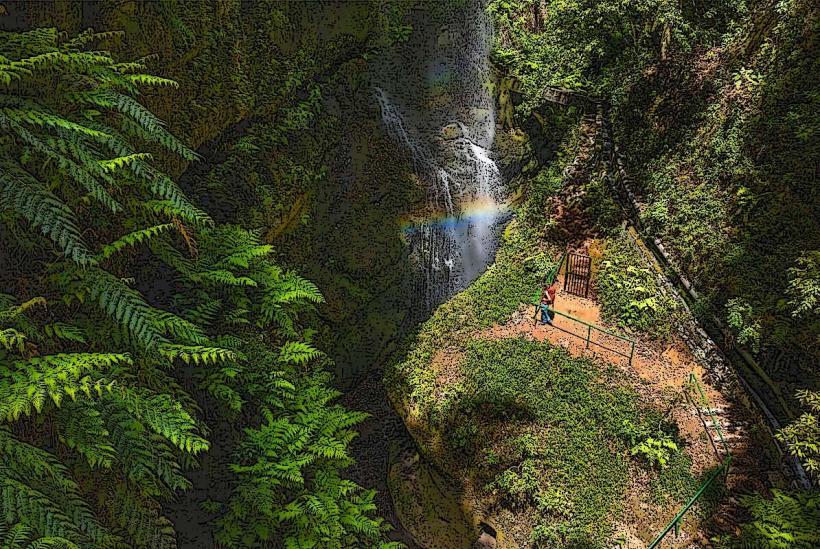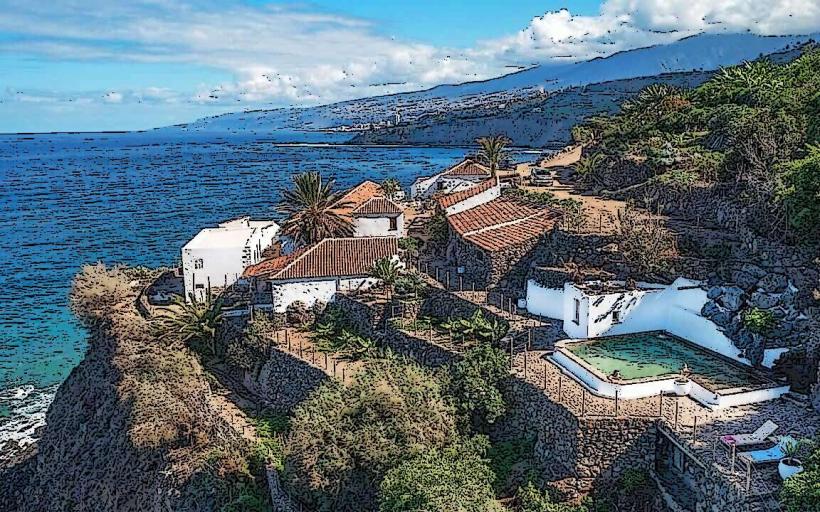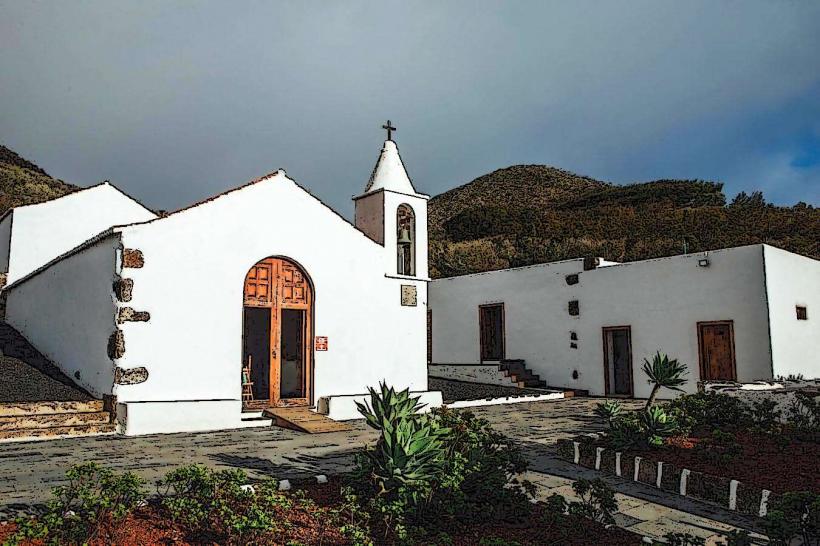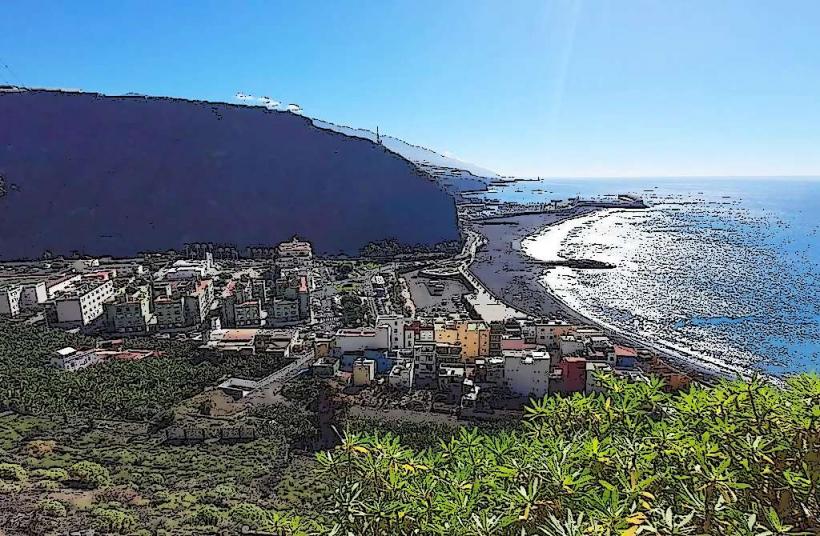Information
Landmark: El PasoCity: La Palma
Country: Canary Islands
Continent: Europe
El Paso is a municipality located in the western part of La Palma, one of the Canary Islands, Spain. It is known for its picturesque landscapes, agricultural heritage, and proximity to Caldera de Taburiente National Park, making it a popular destination for hikers and nature enthusiasts. The town of El Paso serves as an entry point to the island’s stunning volcanic landscapes and natural beauty, offering both cultural experiences and outdoor activities.
Location and Overview
El Paso is situated on the western slopes of La Palma, at an altitude of around 700 meters above sea level, which gives it a mild climate and beautiful views of both the coast and the island’s mountainous interior. The municipality is surrounded by steep ravines, forests, and volcanic terrain, contributing to its dramatic and diverse landscapes.
The town is about 25 kilometers from Santa Cruz de La Palma, the island's capital, and is easily accessible via the island’s road network.
Key Attractions and Landmarks
Caldera de Taburiente National Park:
- El Paso is one of the primary access points to the Caldera de Taburiente, a massive volcanic crater that is part of the island’s natural heritage. The park is home to rugged landscapes, endemic flora, and a variety of wildlife. The La Cumbrecita Viewpoint, located nearby, offers breathtaking views of the Caldera and is easily accessible from El Paso.
- Hiking enthusiasts can enjoy numerous trails within the park, such as the Ruta de los Volcanes, which offers spectacular views of La Palma’s volcanic landscape.
La Cumbrecita Viewpoint:
- Located just outside of El Paso, this viewpoint offers some of the best panoramic views of the Caldera de Taburiente and surrounding mountains. It’s a popular spot for photography and a starting point for various hiking trails.
Museo de la Seda (Silk Museum):
- El Paso is known for its silk production, and the Museo de la Seda offers visitors a glimpse into the island’s silk-making history. The museum is housed in a traditional building where you can learn about the process of silk production and see examples of the fine fabrics that were once a significant part of La Palma’s economy.
Charco Azul (Blue Pool):
- A natural swimming area located near the coast of El Paso, Charco Azul is a popular spot for locals and visitors alike. The crystal-clear waters are perfect for swimming, and the surrounding landscape is breathtaking.
La Palma's Vineyards:
- El Paso is located in an area known for its wine production. The vineyards in the region produce the local Malvasía wine, a sweet white wine that has been a part of the island's agricultural tradition for centuries. Visitors can tour the vineyards, taste local wines, and learn about the wine-making process.
Ravines and Trails:
- El Paso is surrounded by several scenic ravines, such as Barranco de las Angustias and Barranco de los Hombres, offering plenty of opportunities for hiking, canyoning, and exploring the island's unique volcanic landscape. Trails ranging from easy walks to more challenging routes can be accessed from the town and its surrounding areas.
Nature and Outdoor Activities
El Paso’s position within the mountainous interior of La Palma makes it an ideal location for outdoor activities, including:
Hiking: The area offers a wide variety of hiking trails, from leisurely walks through the surrounding forests to more challenging treks within the Caldera de Taburiente National Park. Popular routes include:
- The Ruta de los Volcanes, which offers stunning views of La Palma’s volcanic terrain and leads all the way to the Roque de los Muchachos Observatory.
- Barranco de las Angustias, a trail that descends into a lush ravine, providing an opportunity to explore La Palma’s rugged terrain.
Stargazing: La Palma is known for its clear skies and is home to the Roque de los Muchachos Observatory, one of the world’s most important astronomical observatories. El Paso’s high altitude and low light pollution make it a great base for stargazing.
Canyoning: The steep ravines around El Paso are ideal for canyoning, a thrilling activity that involves descending into deep ravines, climbing waterfalls, and exploring the island’s rugged interior. Local guides offer canyoning tours for all skill levels.
Traditional Agriculture and Rural Life
El Paso has a rich agricultural tradition, with the fertile volcanic soil around the town supporting a variety of crops, including bananas, grapes, tomatoes, and potatoes. The region is also known for its organic farming and traditional agricultural practices, many of which have been passed down through generations.
The local agricultural products, particularly the Malvasía wine and La Palma bananas, are significant to the island's economy and culture. Visitors to El Paso can enjoy tasting local food and drink at nearby farms, markets, and restaurants.
Best Time to Visit
El Paso is a year-round destination, with a mild climate that makes it ideal for outdoor activities at any time of the year. However, the best time to visit depends on your interests:
- Spring and Autumn: These seasons offer pleasant weather for hiking and outdoor activities, with the added benefit of fewer tourists.
- Winter: Although it can be cooler, winter is a good time for stargazing due to the clear skies.
- Summer: Summer months are perfect for exploring the natural swimming pools like Charco Azul and enjoying the warm weather.
Conclusion
El Paso is a hidden gem in La Palma, offering a combination of natural beauty, outdoor activities, agricultural traditions, and cultural landmarks. Whether you're hiking through the rugged landscapes of Caldera de Taburiente, exploring local history at the Silk Museum, or relaxing at the Blue Pool, El Paso provides a diverse and rewarding experience. It serves as an excellent base for exploring the island's natural wonders and offers a unique opportunity to experience La Palma's rural life and traditions.

